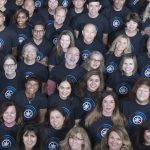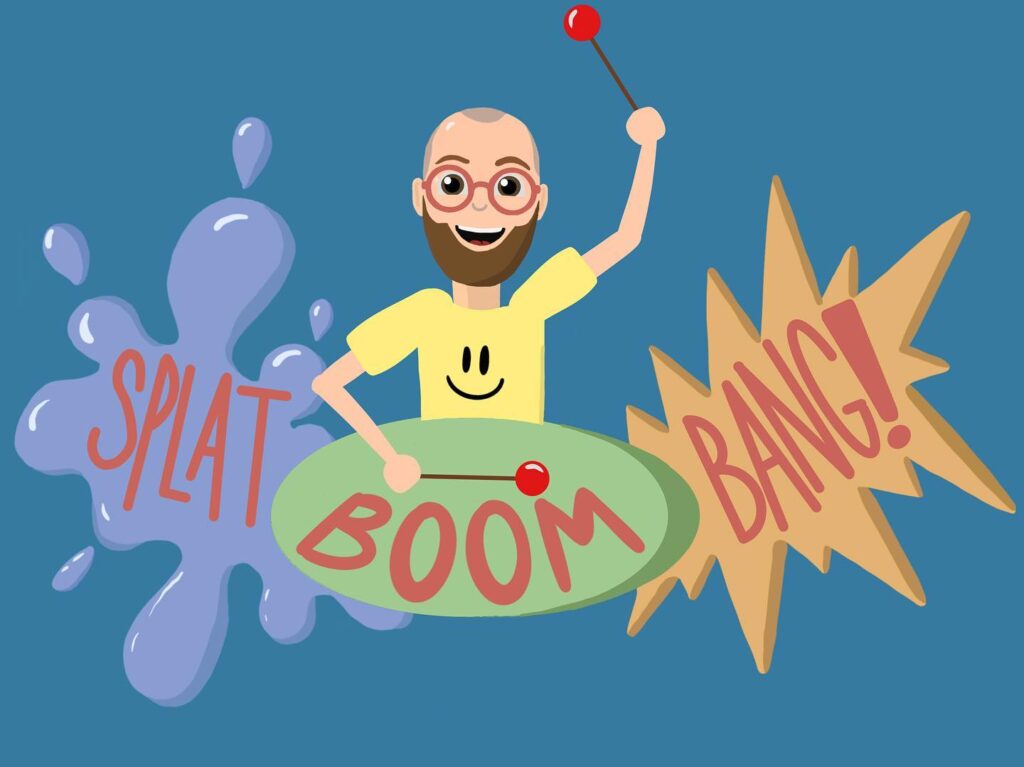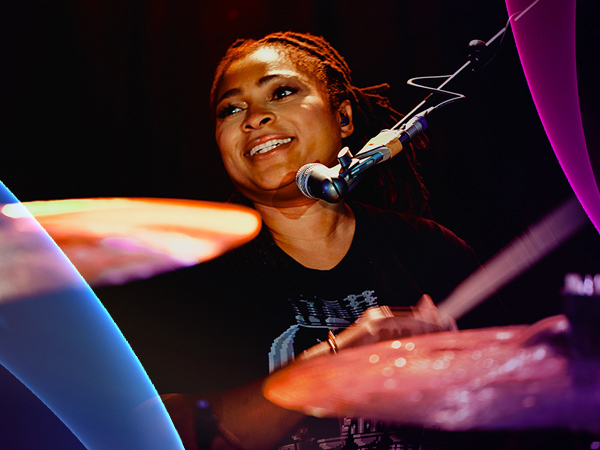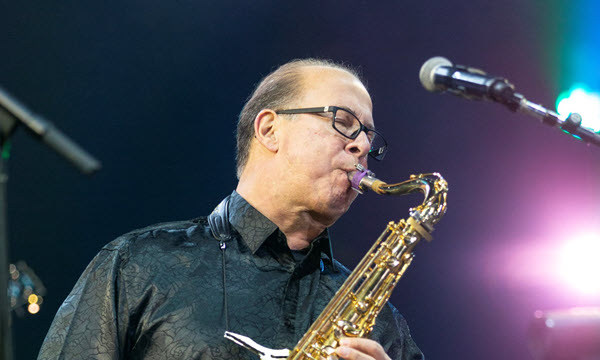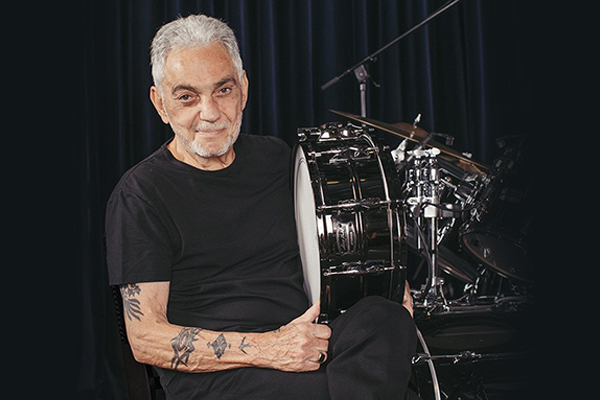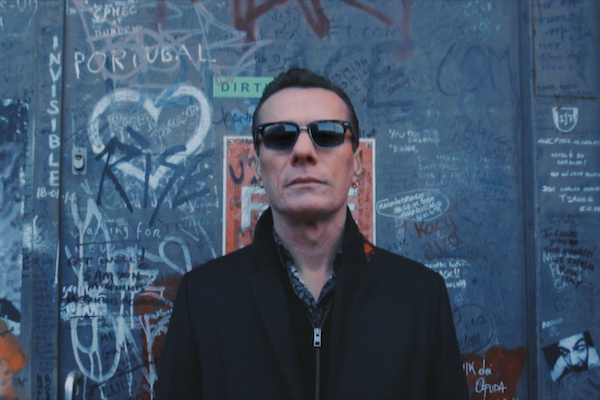Tagged Under:
Making Connections Through Music
How a sense of community helped one young drummer find his way.
Music has always been one of the best ways for people to get to know each other and form bonds, and student Octavio Tostado’s diverse musical skillset has helped him to connect with an especially wide range of musicians. From metal to jazz, samba and classic rock, he has learned to drive the rhythm and stay in the groove no matter what the genre. He certainly has come a long way from his early musical beginnings in a small town in Mexico.
Forged in Metal
For Octavio Tostado, the rhythm of music has always thundered deep within his soul. “Ever since I was a kid, before I even played an instrument, I would pound out these hand rhythms on my chest,” he says. “Whether at school or watching soccer, I was always keeping the beat with my body.”
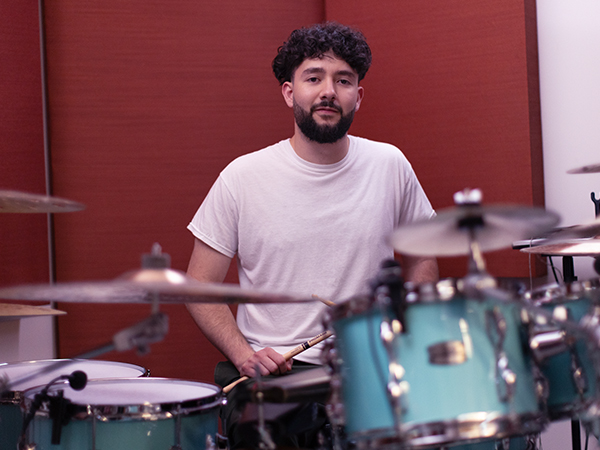
Octavio got his first drum set when he was just 12 years old and living in the small town of Zapotlanejo in Jalisco, Mexico. “My dad bought it for me after I had been playing the Rock Band video game for a couple of years,” he says. That early experience led him to develop a unique finger-tapping technique that helped him practice even when he wasn’t sitting behind the drums.
With his older brother on guitar, Octavio formed his first band, playing the music of the metal bands they admired. He found that the rest of his body effortlessly followed his finger technique, allowing him to quickly pick up heavy metal drumming. “I could do the double pedal and keep the beat, and people went crazy for that,” he says.
Having proven himself a natural at percussion, Tostado continued to broaden his influences. He played drums for the local ballad singers in the town square, started working on classic rock and alternative songs, and kept an active schedule of jamming and gigging with his family and local musicians.
But at the time when he was about to start high school, his parents decided to move to the U.S., forcing Octavio to sell his beloved drum set, but giving him an opportunity for a new start in southern California.
Adapting to Cultural Change and Honing Skills
Arriving at Paramount High School in Los Angeles, Octavio adapted to the cultural changes of the new environment while also finding ways to keep music a part of his life. He met new musicians with different influences and skills, and was soon jamming and making music again with a new drum set he bought with his dad.
The band he joined had an eclectic indie sound with horns and an affinity for slower ballads. The new style gave Tostado interesting insight into his own playing, he says, teaching him about the complexity of rhythms much tamer than the metal patterns he’d developed.
@yamahamusicusa We asked @octavio_tostado if he could play 6 genres in under 60 seconds. Challenge accepted! ✅ #VersatileDrummer #DrummerCheck #YamahaMusic ♬ original sound – Yamaha Music
“At first I was like, ‘Where is the double pedal?’” he says. “’Where are the fills, the hard stuff, the fast stuff?’ But at the same time, I learned that it’s not so easy to play the slower stuff. It’s probably even harder than playing fast — way harder than you think. The dynamics become much more important.”
Expressing the Beat
Once he finished high school, Octavio faced the challenges many other musicians face, having to earn money to survive while also keeping his passion for playing. The path he started at Cerritos College was initially towards nursing, but the call to make music became too strong to ignore. He eventually switched to a Commercial Music degree, which helps students prepare for professional careers in music with hands-on classes to gain entry-level experience.
There have been a number of eye-opening experiences in the classroom, Tostado says. These included audio production workshops and new drum disciplines to study, one of which was a notable semester on jazz drumming, which the self-taught Octavio described as humbling. “I realized how little I knew about drums when I started playing jazz,” he says. “It’s a whole different world, and I thought I really knew my stuff. But when you play jazz, you are learning from the beginning.”
Recording and producing — integral parts of any musician’s career today — are also a main focus for Octavio. He’s taken on numerous projects to help sharpen his DAW (Digital Audio Workstation) chops, and as he approaches graduation and looks toward the future, he’s excited about utilizing his new abilities and sharing with people all across the digital spectrum, with hopes that this will lead to in-person jams and collaborations. “The main thing for me right now is just to connect,” he says. “I want to be known as a musician, as a producer, and share the collaborations that I do with other musicians, so that I can keep continuing to make music with people and grow.”
As he is about to graduate, the music continues to pour out freely. Tostado plays eclectic drum styles with his bandmates and has immersed himself in a variety of percussive varieties and techniques. Yet this musical language he has cultivated and developed with others is not something that Octavio takes for granted.

“To be able to connect with someone musically is a different kind of connection,” he explains. “You can get to know someone over time in a relationship, but for musicians, jamming with someone, making music with them, offers a different kind of insight. You might not know anything about someone when you first jam with them; maybe you have never even talked. But once you listen and watch the way they play their music, you get to know something about them. And if you make that connection musically, you will immediately want to know more about them.”
The Language of Music
Driving all of this, Octavio says, is a love for music that can be so difficult to describe. To help illustrate, he uses jazz improvisation as an example of music’s communicative and mysterious power. “In jazz, every song is a jam session, and everyone takes turns soloing,” he explains. “Each instrument will take their turn to solo, and you watch each other’s faces to know when it’s your turn — that moment when you make eye [contact] with someone after a solo, and you both know it was so good. You each make that face [of agreement], and I love it. For me, that’s the best part, the best feeling.”

Creating a digital version of a distinctively in-person experience poses its challenges, but one often leads to the other in quite harmonious ways. The main shared element is that the music played be authentic and honest, whether in-person or via digital means. For Octavio Tostado, that’s what matters most. “It doesn’t matter where you live,” he says. “As long as there is music, there is always a story to tell.”









